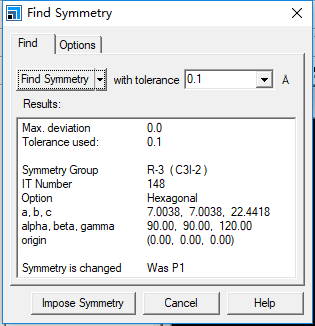CrI3 bulk 结构优化
最近看了一篇文章,是关于铬的卤化物 CrX3 的诸多性质的计算
我尝试着重复这篇文章里的计算。因为我对整个计算流程其实不太熟悉,所以在此详细记录一下整个过程,作为学习笔记。
INCAR
1 | SYSTEM = CrI3 bulk |
各个参数的意义,待说明
POSCAR
具体参考上一篇博客 如何得到 CrI3 bulk 的 POSCAR
1 | CrI3 bulk system |
KPOINTS
1 | k-points |
kpoints 的选取是按照论文中的取法
K -points sampling with a mesh of 8×8×8 kpoints generated by the scheme of Monkhorst-Pack is used for a primitive cell of bulk CrX3 as shown in Fig. 1- (b).
POTCAR
论文里提到用赝势用 PAW_PBE 的方法
The present calculations have been performed with spin-polarization using the Vienna ab initio simulation package (VASP) code20,21 within projector augmentedwave (PAW) method22,23. General gradient approximations (GGA) in the Perdew-Burke-Ernzerhof(PBE) implementation24 are applied as the exchange correlation functional.
因此,先找到 PAW_PBE 的目录,因此导入 I 和 Cr 的POTCAR,再将 POTCAR 转移到计算目录下即可
1 | $ zcat /share/apps/src/vasp/pseudopotential/paw_pbe/I/POTCAR.Z > POTCAR |
计算结果 CONTCAR
计算完成得到了 CONTCAR, 与上一篇博客得到POSCAR 的操作类似,把 CONTCAR 导入 VESTA 得到 cif,再导入 Materials studio,通过 Find Symmetry 可以得到结构优化以后的晶格参数 a 和 c,如下图

对比论文中给出的实验数据

在开始计算时,我输入POSCAR的是 rhombohedral structure, a = 6.867 A,c = 19.807 A,第一步结构优化得到的 CONTCAR 显示优化后 a = 7.0038 A, c = 22.4418。与论文中 PBE 计算的 CrI3 的结果 7.006 和 22.35 可以说是基本一致了。

